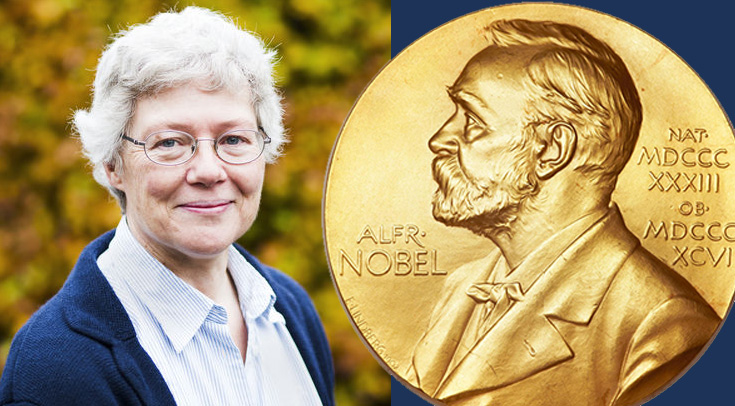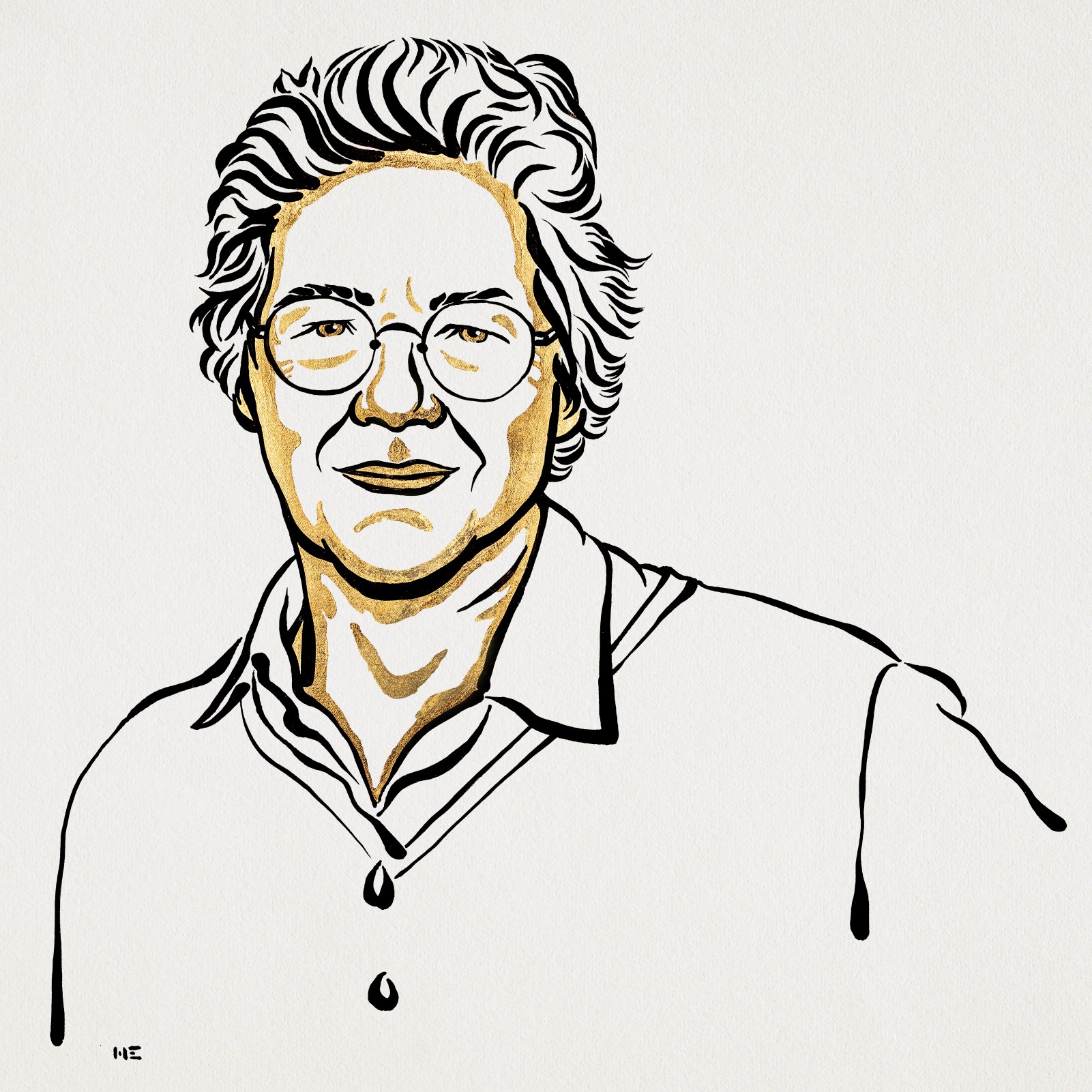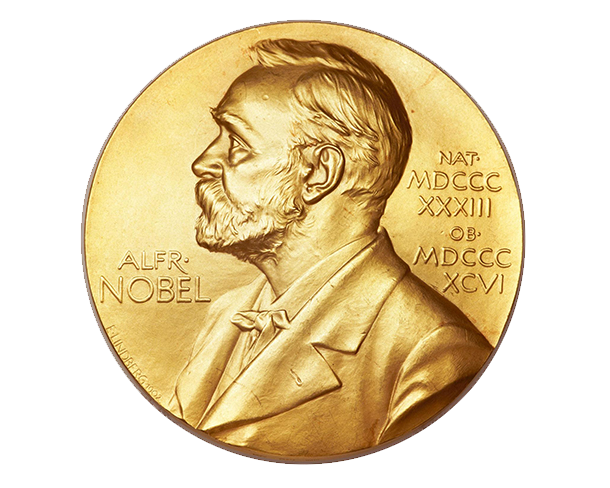The Nobel Prize in Physics in 2023 awarded to Anne L’Huillier
Professor Anne L’Huillier, Atomic Physics at LTH, has been awarded the Nobel Prize in Physics in 2023, jointly with Pierre Agostini and Ferenc Krausz for their experiments, which have given humanity new tools for exploring the world of electrons inside atoms and molecules.
– Published 3 October 2023

When Anne L’Huillier was recently awarded Lund University's gold medal, Lund University's Vice-Chancellor Erik Renström, said:
"Anne L’Huillier is a physicist and Lund University's most decorated researcher. She has received the Wolf Prize in physics – often referred to as the "little Nobel Prize" in physics – and now, only the Nobel Prize itself remains for her."
Now, not even the Nobel Prize remains!
Anne L’Huillier was in the middle of a lecture when the Royal Swedish Academy of Sciences contacted her during a scheduled break and informed her that she had been awarded the Nobel Prize. After getting the news, L'Huillier went right back to her students and told them that the lecture would end a little earlier today ... With only minutes left until the Nobel Prize was to be announced, the students understood what was happening, and it is not an exaggeration to say that the lecture truly became historic.
During the press conference after the physics prize was announced, one of the journalists asked what the next step was now that Anne L’Huillier had received the highest award one can receive.
"The next step is to stay where I am, regardless of what happened today. That's my goal, to continue researching and teaching just as I do today, work with my research group, and continue to be myself," replied Anne L’Huillier.
"We are incredibly proud and happy that Anne L’Huillier has been awarded the Nobel Prize. In addition to being a world-leading researcher, she is a humble person and important role model for young researchers and all LTH students. I hope that our researchers and students will be energised by the fact that a highly talented LTH Professor got the Nobel Prize in Physics 2023. This is truly a day for celebrating!", says Annika Olsson, Dean of the Faculty of Engineering, LTH. (Read more in the Dean's blogg: ”Now, not even the Nobel Prize remains!”)
Extremely short pulses of light
The three Nobel Laureates Pierre Agostini, Ferenc Krausz and Anne L’Huillier have demonstrated a way to create extremely short pulses of light that can be used to measure the rapid processes in which electrons move or change energy.
Fast-moving events flow into each other when perceived by humans, just like a film that consists of still images is perceived as continual movement. If we want to investigate really brief events, we need special technology. In the world of electrons, changes occur in a few tenths of an attosecond – an attosecond is so short that there are as many in one second as there have been seconds since the birth of the universe.
A "first" experiment
In 1987, Anne L’Huillier discovered that many different overtones of light arose when she transmitted infrared laser light through a noble gas. Each overtone is a light wave with a given number of cycles for each cycle in the laser light. They are caused by the laser light interacting with atoms in the gas; it gives some electrons extra energy that is then emitted as light.
At LTH, the atomic physics group was considering a new research orientation in the early 1990s. In 1992, they managed to acquire a unique laser, a terawatt laser, capable of firing 10 ultra-short pulses per second. Thanks to this new laser, LTH was able to attract Anne L’Huillier to Lund. In 1992, she spent two and a half months in Lund and returned two years later. Initially, she commuted between Lund and France, but later was employed on a lectureship , and in 1997, she was offered a professorship.
In a series of works, Anne L’Huillier continued to explore the effect she discovered in 1987, contributing to the theoretical understanding of the phenomenon and thus paving the way for the next experimental breakthrough.
In 2001, Pierre Agostini succeeded in producing and investigating a series of consecutive light pulses, in which each pulse lasted just 250 attoseconds. At the same time, Ferenc Krausz was working with another type of experiment, one that made it possible to isolate a single light pulse that lasted 650 attoseconds.
The laureates’ contributions have enabled the investigation of processes that are so rapid they were previously impossible to follow.
"We can now open the door to the world of electrons. Attosecond physics gives us the opportunity to understand mechanisms that are governed by electrons. The next step will be utilising them," says Eva Olsson, Chair of the Nobel Committee for Physics.
Push molecules
While Anne L’Huillier previously primarily worked on understanding the phenomenon, developing pulse sources and pure basic research, her focus in recent years has shifted towards applications.
“It's about tracking the movements of electrons in more complex systems, such as large molecules. Then, I hope we can better understand what happens at the beginning of a chemical reaction. If that understanding improves, you can then measure what is happening and potentially also control the process. That is the vision. An application we are working on now is how to use radiation to create images of very small structures, which could be used in the semiconductor industry”.
Attosecond pulses can be used to test the internal processes of matter, and to identify n of various events. They have proven invaluable for exploring the physics of atoms and molecules in intricate detail. Furthermore, they offer significant prospects across various practical applications, ranging from electronics to medicine. An example is that attosecond pulses can be employed to push molecules, resulting in a measurable signal. The signal from the molecules exhibits a unique structure, akin to a fingerprint, revealing the identity of the molecule. This holds promising potential within medical diagnostics and other domains.
"Follow your intuition", an interview with Anne L’Huillier from the press conference.
Popular science background: Electrons in pulses of light (PDF, 430KB)

Anne L’Huillier
Anne L’Huillier, born in 1958 (65 years old) in Paris, France. Ph.D. in 1986 from Université Pierre et Marie Curie, Paris, France. Professor of Atomic Physics at LTH (Lund University's Faculty of Engineering). Member of the Royal Swedish Academy of Sciences since 2004. She has been awarded the Max Born Award, UNESCO L’Oreal Award, Blaise Pascal Medal, and the Wolf Prize in physics for pioneering contributions in ultrafast laser science and its applications.
- Professor, Atomic Physics at LTH
- Principal investigator, NanoLund: Center for Nanoscience
- Profile area member, LTH Profile Area: Nanoscience and Semiconductor Technology
- Profile area member, LTH Profile Area: Photon Science and Technology
- Profile area member, Lund University Profile Area: Light and Materials
- Group leader, Lund Attosecond Science Center
Illustration above: Niklas Elmehed/Nobel Prize Outreach

Five women
Anne L'Huillier joins an exclusive group of Nobel laureates. Only five women have been awarded the Nobel Prize in Physics, with Marie Curie being the first.
- Marie Curie (1903)
- Maria Goeppert-Mayer (1963)
- Donna Strickland (2018)
- Andrea M. Ghez (2020)
- Anne L'Huillier (2023)
